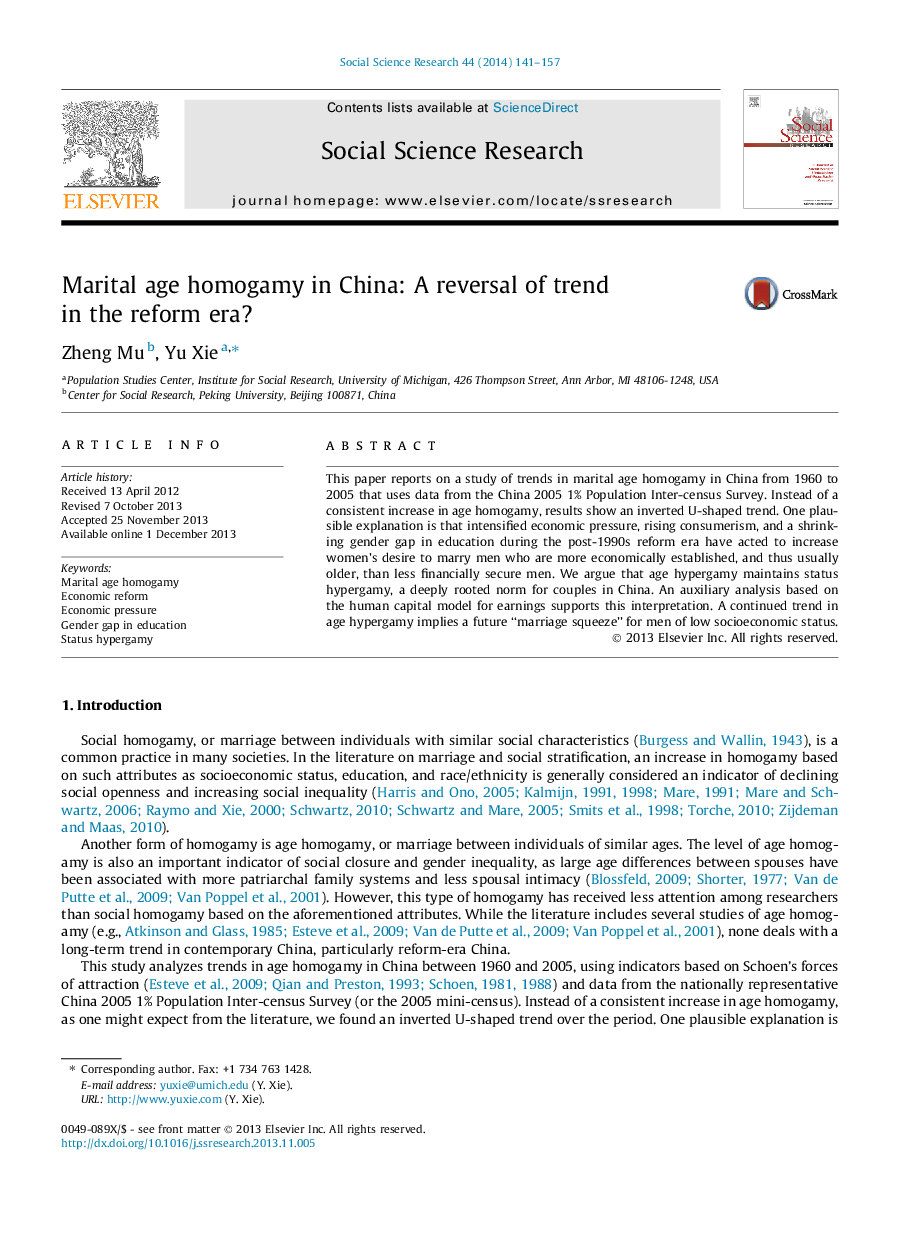| Article ID | Journal | Published Year | Pages | File Type |
|---|---|---|---|---|
| 7339432 | Social Science Research | 2014 | 17 Pages |
Abstract
This paper reports on a study of trends in marital age homogamy in China from 1960 to 2005 that uses data from the China 2005 1% Population Inter-census Survey. Instead of a consistent increase in age homogamy, results show an inverted U-shaped trend. One plausible explanation is that intensified economic pressure, rising consumerism, and a shrinking gender gap in education during the post-1990s reform era have acted to increase women's desire to marry men who are more economically established, and thus usually older, than less financially secure men. We argue that age hypergamy maintains status hypergamy, a deeply rooted norm for couples in China. An auxiliary analysis based on the human capital model for earnings supports this interpretation. A continued trend in age hypergamy implies a future “marriage squeeze” for men of low socioeconomic status.
Keywords
Related Topics
Social Sciences and Humanities
Psychology
Social Psychology
Authors
Zheng Mu, Yu Xie,
